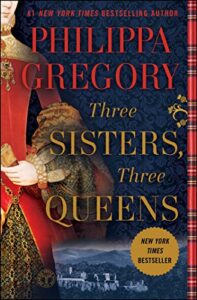
This installment of Summer Reads is a bit on the serious side, because early in the summer I’m still picking through my history reading pile. The first book is historical fiction; the second, narrative non-fiction that is partly biography, and partly a great deal of information on Elizabethan building techniques. Taken in chronological order, let’s start with Philippa Gregory’s Three Sisters, Three Queens (2016)
I doubt if any woman in the Plantagent or Tudor families has escaped Gregory’s in-depth perusal. In Three Sisters she turns her focus on Margaret Tudor, eldest daughter of Henry VII and Elizabeth of York; Mary Tudor, their youngest daughter, and Catherine of Aragon, Henry VIII’s first queen.
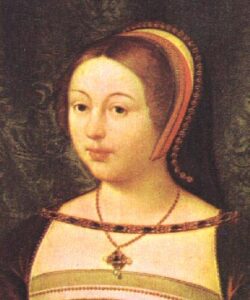
The story is told from the Margaret’s point of view. When the story opens, Margaret is an opinionated, arrogent twelve-year-old princess preparing for the wedding of her brother Arthur and Catherine of Aragon, and sister Mary is age five.
This is Margaret’s story: her marriage to James IV of Scotland and subsequent widowhood; her shortlived Regency for her son; and her impetuous, ill-advised second marriage to Archibald Douglas, the sixth Earl of Angus which quickly went downhill. Eventually there’s a divorce and second marriage. From first to last, this is Margaret’s story.
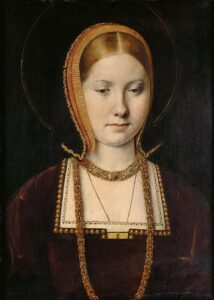
As for the sisters, Catherine’s fate is fairly well-known. Married to Arthur, she becomes an impoverished widow. Married to Henry VIII, Catherine shines as queen, until Henry rejects her and sends the one-time queen back into poverty.
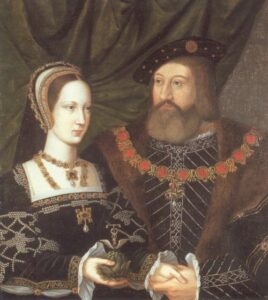
Mary Tudor is a the shadowy figure. Her brother Henry VIII sends her into marriage with Louis XII of France. For three months, Mary is an admired queen. Taking advantage of her widowhood, Mary elopes with Charles Brandon, her brother’s friend, and has four children. Of the three, Mary seems to be happiest with her life.
I enjoyed the book, though I found Margaret to be self-centered and annoying. Other than Margaret’s granddaughter Mary, Queen of Scots, few stories have been told about the queens of Scotland.
As always, Gregory’s reseach is thorough, and her storytelling skills adept
Authors of non-fiction books have a different challenge, becasue no matter how well they can weave a story, they are still bound to the record. The subjects can’t express themselves, unless the diaries or letters that make up the record share the innermost thoughts of the subjects.
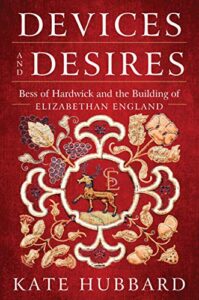
Devices and Desires: Bess of Hardwick and the Building of Elizabethan England (2019) by Kate Hubbard takes Bess of Hardwick as its subject. Bess isn’t too good about sharing her thoughts, but meticulous in her accounts and frequent in correspondence. She was a consummate builder. Among her projects was the first iteration of Chatsworth House. And she outlived four husbands, each of whom lifted her further up the social scale until Bess was a confident of Queen Elizabeth I and one of the wealthiest women in England.
Queen Elizabeth selected Bess’s last husband, George Talbot, the sixth Earl of Shewsbury, as guardian of Mary, Queen of Scots. An expensive honor.
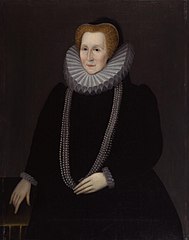
Bess excelled as a business woman. She lent money at interest, advised her husbands on financial matters, and made advantageous marriages for her children, including a marriage between two of her children with two of Talbot’s children. Bess believed in keeping property within the family, and this was the most efficient way to do it.
Building projects were Bess’s true passion, particularly Chatsworth House which she began with her second marriage to William Cavendish and continued with funding from her third and fourth husbands. That structure was demolished in the 18th century to make way for the current Chatsworth House.
In her discussion of Bess’s projects, Hubbard’s attention diverts to architecture, construction practices, and the men who created great houses of the Elizabethan era.
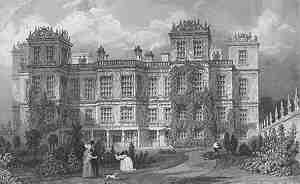
Bess kept records of daily life in these lavish houses. At Hardwick in the 1590s, Bess wrote about the sale of cattle and sheep, the blue cloth she bought to make livery, the oysters sent by her son-in-law, the herrings purchased from Hull. The detail is fascinating.
Filled with detail of society, marriage politics, and domestic arrangements, Devices and Desires is an engaging read, but as non-fiction, it can’t lift the people out of their of their documents.
For an aerial view of Bess’s masterpiece, enjoy this quick video
???
Margaret Tudor by Daniel Mytens
Katherine of Aragon by Michael Sittow
Mary Tudor and Charles Brandon by Jan Gossaert
Bess of Hardwick by rowland Lockey
Hardwick Hall by Thomas Allom

Sandra Wagner-Wright holds the doctoral degree in history and taught women’s and global history at the University of Hawai`i. Sandra travels for her research, most recently to Salem, Massachusetts, the setting of her new Salem Stories series. She also enjoys traveling for new experiences. Recent trips include Antarctica and a river cruise on the Rhine from Amsterdam to Basel.
Sandra particularly likes writing about strong women who make a difference. She lives in Hilo, Hawai`i with her family and writes a blog relating to history, travel, and the idiosyncrasies of life.

